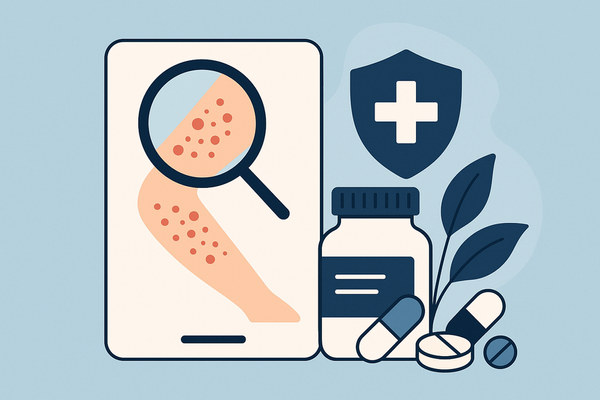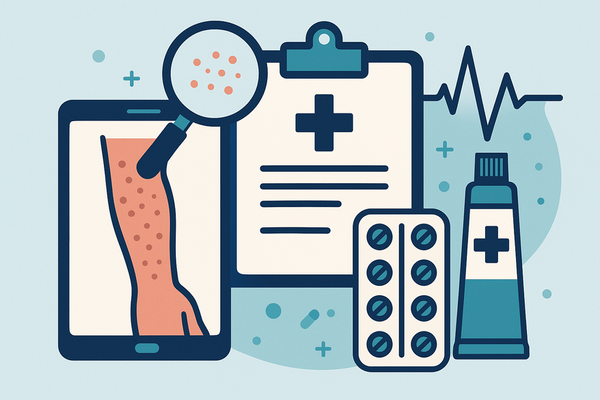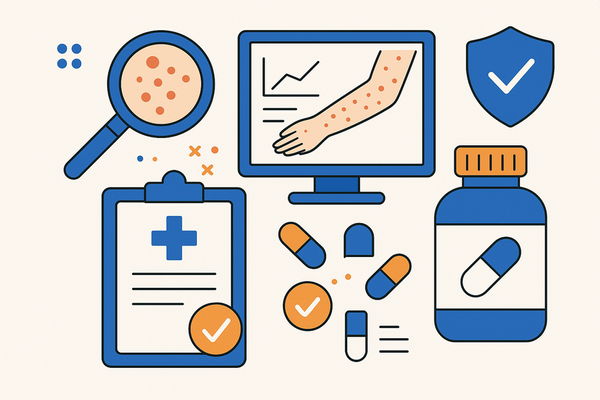Iron Deficiency Rash Triggers: Unveiling the Connection Between Low Iron and Skin Health
Explore how iron deficiency rash triggers can lead to skin rashes, discover the causes, effects, and solutions to address these skin changes effectively.
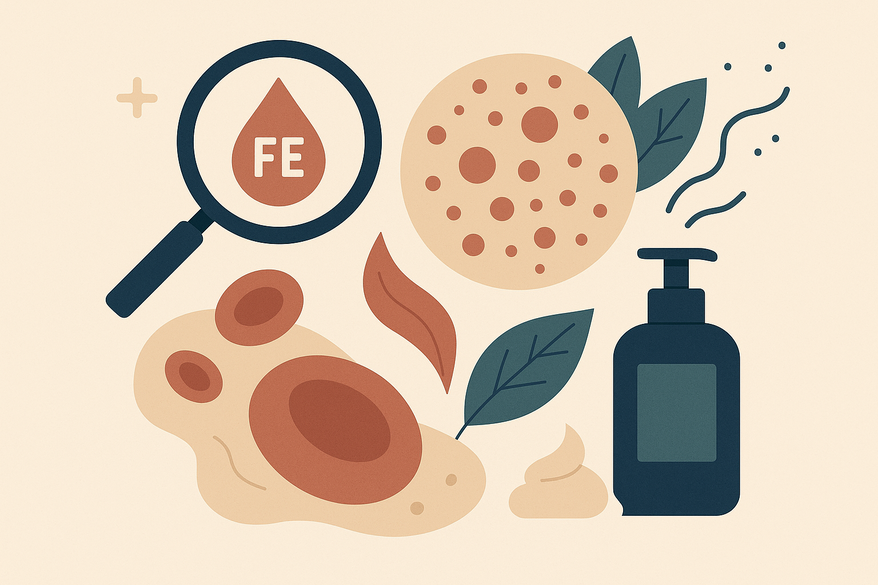
Estimated reading time: 8 minutes
Key Takeaways
- Iron deficiency can manifest on the skin as dryness, itching, pallor, and even petechiae.
- Low iron disrupts oxygen delivery, collagen synthesis, and immune function—key factors in skin health.
- Accurate diagnosis requires blood tests including CBC, ferritin, and iron-binding studies.
- Prevent and treat with dietary changes, proper supplementation, and gentle skin care.
Table of Contents
- Section 1: Understanding Iron Deficiency
- Section 2: Linking Iron Deficiency Rash Triggers to Skin Health
- Section 3: Detailed Analysis of Rash Risk Amplifiers
- Section 4: Differentiating From Other Skin Conditions
- Section 5: Diagnosis and Medical Insights
- Section 6: Prevention and Treatment Strategies
- Conclusion
Section 1: Understanding Iron Deficiency
Iron deficiency represents a state where the body’s iron reserves cannot support normal hemoglobin production, typically defined by:
- Serum ferritin < 15 ng/mL
- Transferrin saturation < 20%
Hemoglobin’s role includes oxygen transport in red blood cells and support of cellular metabolism and energy.
Common causes:
- Dietary insufficiency: low intake of red meat, legumes, fortified grains
- Chronic blood loss: heavy menstrual bleeding, gastrointestinal bleeding
- Malabsorption disorders: celiac disease, inflammatory bowel disease
- Increased requirements: growth spurts, pregnancy, lactation
Systemic symptoms overview:
- Fatigue and weakness
- Pallor (pale skin)
- Shortness of breath
- Weakened immunity
Sources: Cleveland Clinic, Medical News Today, Healthline
Section 2: Linking Iron Deficiency Rash Triggers to Skin Health
Iron is indispensable for maintaining healthy skin. Its primary roles include:
- Oxygen delivery to dermal cells for normal turnover
- Collagen synthesis via prolyl and lysyl hydroxylase enzymes
- Immune cell function to repair and defend the skin barrier
Biological mechanisms leading to rash:
- Hypoxia-induced pallor and fragility: ↓ hemoglobin → ↓ oxygen to skin → dry, fragile texture
- Barrier impairment: increased transepidermal water loss → dryness and pruritus
- Scratch-induced dermatitis: itching leads to excoriations and rash-like lesions
- Petechiae in severe cases: fragile capillaries leak → red/purple pinpoint spots
Sources: Kalon Dermatology, Cleveland Clinic, Medical News Today
Section 3: Detailed Analysis of Rash Risk Amplifiers
Several factors can exacerbate rash risk in an iron-deficient state:
- Pre-existing dry or sensitive skin aggravated by low oxygen levels
- Impaired wound healing leading to chronic excoriations and visible rashes
- Altered innate immunity increasing inflammation and infection risk
- Hypersensitivity to oral iron supplements causing hives or urticaria
Inflammation’s role:
- Deficiency impairs barrier proteins (filaggrin, involucrin)
- Barrier loss triggers pro-inflammatory cytokine release
- Results in itchy erythema and persistent redness
Sources: Cleveland Clinic, Kalon Dermatology, Healthline, HealthMatch
Section 4: Differentiating From Other Skin Conditions
Contrast features:
- Iron deficiency rash: generalized dryness, widespread pruritus, pallor; rare non-blanching petechiae
- Eczema/atopic dermatitis: localized flexural lichenification, history of allergies
- Urticaria/allergic rashes: wheals that appear and disappear, often with angioedema
Recognition tips:
- Persistent itching plus fatigue and pallor suggests systemic cause
- Non-blanching petechiae vs. allergic papules: press to check capillary fragility
- If bruising or unexplained bleeding occurs, prioritize bloodwork over topical creams
Sources: Cleveland Clinic, Medical News Today, Healthline
Section 5: Diagnosis and Medical Insights
An accurate diagnosis follows a structured workflow:
- Clinical exam: assess rash distribution, skin dryness, pallor
- Blood tests:
- Complete blood count (CBC): hemoglobin, mean corpuscular volume
- Serum ferritin, serum iron, total iron-binding capacity, transferrin saturation
- Differential diagnosis: rule out thrombocytopenia or aplastic anemia if petechiae are widespread
Importance of professional evaluation:
- Self-diagnosis risks missing serious conditions
- Dermatologists and hematologists can tailor treatment
- Regular monitoring prevents complications
Sources: Healthline, Cleveland Clinic, Medical News Today, Kalon Dermatology
Section 6: Prevention and Treatment Strategies
Dietary interventions:
- Iron-rich foods: red meat, poultry, seafood, legumes, spinach, cereal
- Nutrient enhancers: vitamin C from citrus fruits and bell peppers
- Inhibitors to avoid with meals: calcium (dairy), tannins (tea, coffee)
For more on how an anti-inflammatory diet can benefit skin rashes, see our guide.
Supplementation and medical therapies:
- Oral iron (ferrous sulfate/gluconate): 100–200 mg elemental iron daily
- Intravenous iron or transfusions for severe cases
- Monitor ferritin levels every 4–6 weeks to track progress
Skin-focused care:
- Gentle skincare: fragrance-free emollients, lukewarm showers, mild cleansers
- Topical corticosteroids or oral antihistamines to relieve itching
- Avoid scratch-promoting fabrics; choose soft cotton
For quick, AI-based skin analysis, you might consider using Rash Detector. Upload a few images and get an easy-to-read report in seconds.
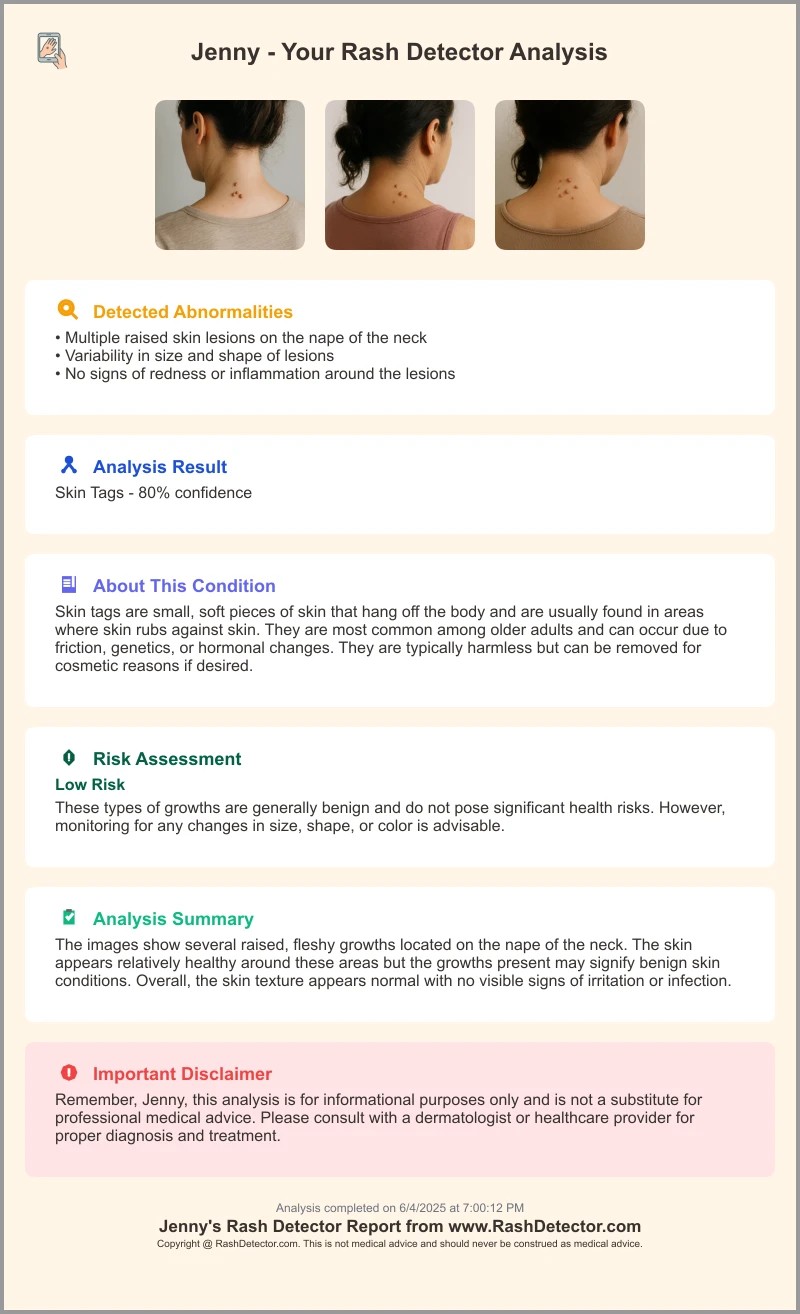
Conclusion
Iron deficiency rash triggers arise through hypoxia, barrier dysfunction, inflammation, and capillary fragility. Skin changes—dryness, itching, pallor, or tiny petechiae—often signal a systemic iron deficit. Key steps include:
- Monitor your diet for iron-rich foods and absorption enhancers
- Watch for skin symptoms alongside fatigue or pallor
- Seek professional evaluation for blood tests and tailored treatment
- Follow medical advice on supplements and gentle skin care
FAQ
How does iron deficiency cause skin rashes?
Low iron reduces oxygen delivery, impairs collagen synthesis, and weakens immune defenses. The result is dry, fragile skin prone to itching and minor bleeding.
When should I see a doctor?
If you experience persistent itching with fatigue, pallor, or unexplained bruising, seek a medical evaluation for blood tests.
Can diet alone fix a rash from low iron?
Dietary changes help mild cases, but moderate to severe deficiency often requires supplements or medical therapies under professional guidance.


